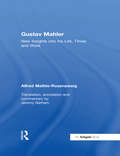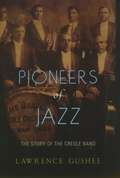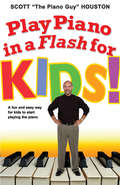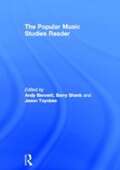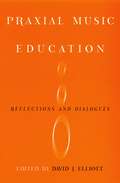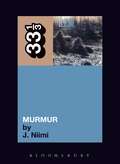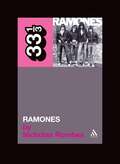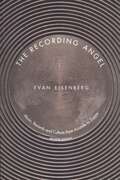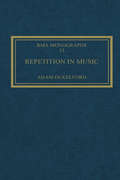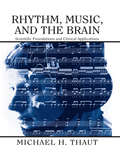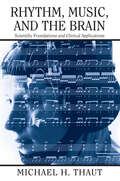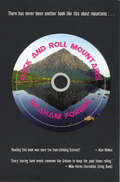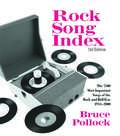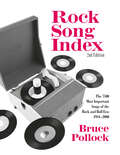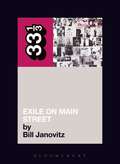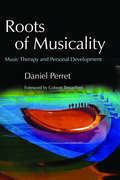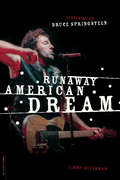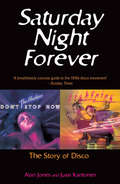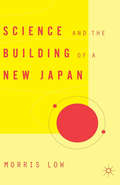- Table View
- List View
Perspectives on Gustav Mahler
by Jeremy BarhamGustav Mahler's music continues to enjoy global prominence, both in live or recorded performance and within broader ranges of critical perception and cultural sensibility. In recognition of such a profile, this volume brings together a unique collection of essays exploring the diverse methods and topics characteristic of recent advances in Mahler scholarship. The book's international group of contributors is actively involved not only in bringing fresh approaches to Mahler research in areas such as analysis, sketch studies and reception history, but also in examining hitherto neglected issues of cultural and biographical interpretation, performance practice and compositional aesthetic, thereby illustrating the developing vitality and scope of this field. Engaging with its subject from reconstructive, documentary, theoretical, analytical, discursive and interpretative viewpoints, this volume provides a wide spectrum of contexts in which continuing debate about Mahler's life and works can flourish. Its varied themes and strategies nevertheless collectively recognize and negotiate the shifting space both between the composer's life and his artistic creativity, and between the musical results of that creativity and the critical-analytical process. The essays in this book accordingly fill certain gaps in the scholarly understanding of the composer, and re-orientate Mahler studies towards some of the central concerns of contemporary musicological thinking.
Perspectives on Gustav Mahler
by Jeremy BarhamGustav Mahler's music continues to enjoy global prominence, both in live or recorded performance and within broader ranges of critical perception and cultural sensibility. In recognition of such a profile, this volume brings together a unique collection of essays exploring the diverse methods and topics characteristic of recent advances in Mahler scholarship. The book's international group of contributors is actively involved not only in bringing fresh approaches to Mahler research in areas such as analysis, sketch studies and reception history, but also in examining hitherto neglected issues of cultural and biographical interpretation, performance practice and compositional aesthetic, thereby illustrating the developing vitality and scope of this field. Engaging with its subject from reconstructive, documentary, theoretical, analytical, discursive and interpretative viewpoints, this volume provides a wide spectrum of contexts in which continuing debate about Mahler's life and works can flourish. Its varied themes and strategies nevertheless collectively recognize and negotiate the shifting space both between the composer's life and his artistic creativity, and between the musical results of that creativity and the critical-analytical process. The essays in this book accordingly fill certain gaps in the scholarly understanding of the composer, and re-orientate Mahler studies towards some of the central concerns of contemporary musicological thinking.
Pioneers of Jazz: The Story of the Creole Band
by Lawrence GusheeThanks to the pioneering tours of the Creole Band, jazz began to be heard nationwide on the vaudeville stages of America from 1914 to 1918. This seven-piece band toured the country, exporting for the first time the authentic jazz strains that had developed in New Orleans at the start of the 20th century. The band's vaudeville routines were deeply rooted in the minstrel shows and plantation cliches of American show business in the late 19th century, but its instrumental music was central to its performance and distinctive and entrancing to audiences and reviewers. Pioneers of Jazz reveals at long last the link between New Orleans music and the jazz phenomenon that swept America in the 1920s. While they were the first important band from New Orleans to attain national exposure, The Creole Band has not heretofore been recognized for its unique importance. But in his monumental, careful research, jazz scholar Lawrence Gushee firmly establishes the group's central role in jazz history. Gushee traces the troupe's activities and quotes the reaction of critics and audiences to their first encounters with this new musical phenomenon. While audiences often expected (and got) a kind of minstrel show, the group transcended expectations, taking pride in their music and facing down the theatrical establishment with courage. Although they played the West Coast and Canada, most of their touring centered in the heartland. Most towns of any size in Iowa, Illinois, and Indiana heard them, often repeatedly, and virtually all of their appearances were received with wild enthusiasm. After four years of nearly incessant traveling, members of the band founded or joined groups in Chicago's South Side cabaret scene, igniting the craze for hot New Orleans music for which the Windy City was renowned in the early 1920s. The best-known musicians in the group--cornetist Freddie Keppard, clarinetist Jimmy Noone and string bassist Bill Johnson--would play a significant role in jazz, becoming famous for recordings in the 1920s. Gushee effectively brings to life each member of the band and discusses their individual contributions, while analyzing the music with precision, skillful and exacting documentation. Including many never before published photos and interviews, the book also provides an invaluable and colorful look at show business, especially vaudeville, in the 1910s. While some of the first jazz historians were aware of the band's importance, attempts to locate and interview surviving members (three died before 1935) were sporadic and did little or nothing to correct the mostly erroneous accounts of the band's career. The jazz world has long known about Gushee's original work on this previously neglected subject, and the book represents an important event in jazz scholarship. Pioneers of Jazz brilliantly places this group's unique importance into a broad cultural and historical context, and provides the crucial link between jazz's origins in New Orleans and the beginning of its dissemination across the country.
Play Piano in a Flash for Kids!: A Fun and Easy Way for Kids to Start Playing the Piano
by Scott HoustonGetting a child to play piano has never been easier!As seen on public television nationwide, Scott "The Piano Guy" Houston is the leading authority on fast and fun piano instruction. In Play Piano in a Flash for Kids! he simplifies his unique and effective method of learning to play piano, making it accessible to even the youngest want-to-be pianists. Highlighting popular, not classical, music, this book fosters and nourishes an early love for music by giving children the tools to play their favorite popular songs.Your child will be able to:Learn the basics of piano playing using a simple technique that pros use, which focuses on becoming a good player versus becoming a good notation reader Use easy-to-follow step-by-step illustrations that demonstrate each stage of learning Play popular music on the piano without having to learn how to read complicated sheet musicIt is a great book for kids who may have taken lessons previously but became frustrated by the long and complicated process. And all at a fraction of the cost of piano lessons!Both parents and children can have fun learning the piano or keyboard together, or children can work through the book on their own, with parents providing support only when needed. Play Piano in a Flash for Kids! is the perfect tool for parents or teachers to help their kids learn to play the piano quickly and easily.
Popular Music Genres: An Introduction
by Stuart Borthwick Ron MoyAn accessible introduction to the study of popular music, this book takes a schematic approach to a range of popular music genres, and examines them in terms of their antecedents, histories, visual aesthetics, and sociopolitical contexts. Within this interdisciplinary and genre-based focus, readers will gain insights into the relationships between popular music, cultural history, economics, politics, iconography, production techniques, technology, marketing, and musical structure.
Popular Music Genres: An Introduction (Edinburgh University Press Ser.)
by Stuart Borthwick Ron MoyAn accessible introduction to the study of popular music, this book takes a schematic approach to a range of popular music genres, and examines them in terms of their antecedents, histories, visual aesthetics, and sociopolitical contexts. Within this interdisciplinary and genre-based focus, readers will gain insights into the relationships between popular music, cultural history, economics, politics, iconography, production techniques, technology, marketing, and musical structure.
The Popular Music Studies Reader
by Andy Bennett Barry Shank Jason ToynbeeThe Popular Music Studies Reader maps the changing nature of popular music over the last decade and considers how popular music studies has expanded and developed to deal with these changes. A wide range of international contributors featuring some of the biggest names in popular music and cultural studies including Philip Auslander, Paul Gilroy and Kodwo Eshun and discuss: * the increasing participation of women in the industry * the changing role of gender and sexuality in popular music * the role of new technologies, especially in production and distribution * the changing nature of the relationship between music production and consumption. The Popular Music Studies Reader places popular music in its cultural context, looks at the significance of popular music in our everyday lives, and examines the global nature of the music industry.
Praxial Music Education: Reflections and Dialogues
by David J. ElliottPraxial Music Education is a collection of essays by nineteen internationally recognized scholars in music education. Each essay offers critical reflections on a key topic in contemporary music education. The starting point of each essay, and the unifying thread of this collection, is the "praxial" philosophy of music education explained in Elliott's Music Matters: A New Philosophy of Music Education (OUP, 1995). This philosophy argues for a socially and artistically grounded concept of music and music education, challenging the field's traditional "absolutist" foundations. Praxial Music Education is both a critical companion to Music Matters, and an independent text on contemporary issues in music education. Among the themes discussed are multicultural music education, the nature of musical understanding, early childhood music education, the nature and teaching of music listening, music curriculum development, and musical creativity. Praxial music education is a living theory. This unique collection will not only enrich discussions that already use Music Matters as their core, but will globalize current discussions and applications of the praxial philosophy and emphasize the positive and practical values of collaborative efforts in music education.
R.E.M.'s Murmur (33 1/3)
by J. NiimiR.E.M.'s debut album, released in 1983, was so far removed from the prevailing trends of American popular music that it still sounds miraculous and out of time today. J. Niimi tells the story of the album's genesis - with fascinating input from Don Dixon and Mitch Easter. He also investigates Michael Stipe's hypnotic, mysterious lyrics, and makes the case for Murmur as a work of Southern Gothic art.
The Ramones' Ramones (33 1/3)
by Nicholas RombesWhat could be more punk rock than a band that never changed, a band that for decades punched out three-minute powerhouses in the style that made them famous? The Ramones' repetition and attitude inspired a genre, and Ramones set its tone. Nicholas Rombes examines punk history, with the recording of Ramones at its core, in this inspiring and thoroughly researched justification of his obsession with the album.
The Recording Angel
by Evan EisenbergFirst published in 1987 and now considered a classic, The Recording Angel charts the ways in which the phonograph and its cousins have transformed our culture. In a new Afterword, Evan Eisenberg shows how digital technology, file trading, and other recent developments are accelerating-or reversing-these trends. Influential and provocative, The Recording Angel is required reading for anyone who cares about the effect recording has had-and will have-on our experience of music.
Repetition in Music: Theoretical and Metatheoretical Perspectives
by Adam OckelfordThis monograph examines the place of repetition in perceived musical structure and in theories of music. Following a preface and introduction, there are four main chapters: 'Theory', 'Analysis', 'Metatheory and Meta-analysis', and 'Cognition and Metacognition'. Chapter 2 (Theory) sets out the principles underlying the creation and cognition of musical structure developed by the author in earlier studies, in the dual context of David Lewin's mathematically based theory of musical intervals and transformations and Gilles Fauconnier's concept of mental spaces (which was formulated in the context of cognitive science). Chapter 3 (Analysis) shows the theory in operation in relation to the first movement of Mozart's piano sonata K.333. It indicates how structural issues may be related to considerations of aesthetic response and musical 'worth' through comparison with J.C. Bach's Sonata op. 5 no. 3. Chapter 4 (Metatheory and Meta-analysis) uses the new theory to interrogate the propositions underpinning set theory and transformations, offering a psychomusicological critique and potential development of, for example, the work of Forte, Morris, Isaacson and Straus. This enables issues raised earlier in relation to the work of Lewin to be addressed. In conclusion, in Chapter 5 (Cognition and Metacognition), the matter of cognitive preferences and constraints is considered in relation to repetition in music, which permits a final investigation of different approaches to musical analysis to be undertaken. In summary, by synthesising the findings of diverse earlier work in the context of the new theory, it proves possible to move thinking forward on a number of fronts, and to indicate potential directions for future empirical and analytical developments.
Repetition in Music: Theoretical and Metatheoretical Perspectives
by Adam OckelfordThis monograph examines the place of repetition in perceived musical structure and in theories of music. Following a preface and introduction, there are four main chapters: 'Theory', 'Analysis', 'Metatheory and Meta-analysis', and 'Cognition and Metacognition'. Chapter 2 (Theory) sets out the principles underlying the creation and cognition of musical structure developed by the author in earlier studies, in the dual context of David Lewin's mathematically based theory of musical intervals and transformations and Gilles Fauconnier's concept of mental spaces (which was formulated in the context of cognitive science). Chapter 3 (Analysis) shows the theory in operation in relation to the first movement of Mozart's piano sonata K.333. It indicates how structural issues may be related to considerations of aesthetic response and musical 'worth' through comparison with J.C. Bach's Sonata op. 5 no. 3. Chapter 4 (Metatheory and Meta-analysis) uses the new theory to interrogate the propositions underpinning set theory and transformations, offering a psychomusicological critique and potential development of, for example, the work of Forte, Morris, Isaacson and Straus. This enables issues raised earlier in relation to the work of Lewin to be addressed. In conclusion, in Chapter 5 (Cognition and Metacognition), the matter of cognitive preferences and constraints is considered in relation to repetition in music, which permits a final investigation of different approaches to musical analysis to be undertaken. In summary, by synthesising the findings of diverse earlier work in the context of the new theory, it proves possible to move thinking forward on a number of fronts, and to indicate potential directions for future empirical and analytical developments.
Rhythm, Music, and the Brain: Scientific Foundations and Clinical Applications
by Michael ThautWith the advent of modern cognitive neuroscience and new tools of studying the human brain "live," music as a highly complex, temporally ordered and rule-based sensory language quickly became a fascinating topic of study. The question of "how" music moves us, stimulates our thoughts, feelings, and kinesthetic sense, and how it can reach the human experience in profound ways is now measured with the advent of modern cognitive neuroscience. The goal of Rhythm, Music and the Brain is an attempt to bring the knowledge of the arts and the sciences and review our current state of study about the brain and music, specifically rhythm. The author provides a thorough examination of the current state of research, including the biomedical applications of neurological music therapy in sensorimotor speech and cognitive rehabilitation. This book will be of interest for the lay and professional reader in the sciences and arts as well as the professionals in the fields of neuroscientific research, medicine, and rehabilitation.
Rhythm, Music, and the Brain: Scientific Foundations and Clinical Applications
by Michael ThautWith the advent of modern cognitive neuroscience and new tools of studying the human brain "live," music as a highly complex, temporally ordered and rule-based sensory language quickly became a fascinating topic of study. The question of "how" music moves us, stimulates our thoughts, feelings, and kinesthetic sense, and how it can reach the human experience in profound ways is now measured with the advent of modern cognitive neuroscience. The goal of Rhythm, Music and the Brain is an attempt to bring the knowledge of the arts and the sciences and review our current state of study about the brain and music, specifically rhythm. The author provides a thorough examination of the current state of research, including the biomedical applications of neurological music therapy in sensorimotor speech and cognitive rehabilitation. This book will be of interest for the lay and professional reader in the sciences and arts as well as the professionals in the fields of neuroscientific research, medicine, and rehabilitation.
Robert Schumann and the Piano Concerto
by Claudia MacdonaldRobert Schumann was a unique personality in 19th century music: a celebrated music critic and champion of new composers as well as a talented performer and composer himself, he did much to modernize the literature and performance style for the piano. This book covers the key period of c. 1815-55, exploring how the generation that came after Beethoven was central in reshaping and refining the conception of the concerto style, and particularly the piano concerto. It relates Schumann's own compositional development to his musical environment, recreating the exciting milieu in which Schumann and his contemporaries lived and worked. Written in scholarly, but non-technical language, Robert Schumann and the Development of the Piano Concerto will appeal to college and conservatory teachers and students, as well as music connoisseurs. Also includes 60 musical examples.
Robert Schumann and the Piano Concerto
by Claudia MacdonaldRobert Schumann was a unique personality in 19th century music: a celebrated music critic and champion of new composers as well as a talented performer and composer himself, he did much to modernize the literature and performance style for the piano. This book covers the key period of c. 1815-55, exploring how the generation that came after Beethoven was central in reshaping and refining the conception of the concerto style, and particularly the piano concerto. It relates Schumann's own compositional development to his musical environment, recreating the exciting milieu in which Schumann and his contemporaries lived and worked. Written in scholarly, but non-technical language, Robert Schumann and the Development of the Piano Concerto will appeal to college and conservatory teachers and students, as well as music connoisseurs. Also includes 60 musical examples.
Rock and Roll Mountains
by Graham Forbes AuthorGraham Forbes loved to play guitar, whether it was with local rock groups pillaging village halls or on the big stages of the world with the Incredible String Band. But, like so many others, he enjoyed the gigs, groupies and booze too much. At 27, he found himself back in Glasgow, ears ringing, scratching his head, completely unemployable, with an empty bottle of tequila in one hand and a huge tax demand in the other. It had been great while it lasted but the party was over.Realising his mind was like and out-of-control firework display and that his next stop was the Happy Duck Rest Home for the Bewildered, Graham noticed there were hills nearby and decided to go for a walk. Just as it seemed he might at last settle down to some sort of normal life he met a crazy climber with a taste for the bizarre . . . It was the beginning of a journey that would transform Graham completely, taking him from poverty to bluffing his way onto the board of directors of a national company, hoping that their next meeting wouldn't be in a hotel he'd wrecked in his previous life. Roaring along with bawdy tales of marauding bands, mad mountaineers and unforgettable Glasgow street characters, Rock and Roll Mountains weaves through wild rock tours and terrifying ice climbing to glowing sunsets on some of the most beautiful summits in the world. It is a book about extreme sport, fear and survival - but without the the gung-ho heroics of mountaineering writers.At times deeply moving, insightful yet hilarious and with an extraordinary climax, this book is for anyone who has looked in the mirror and wondered where it all went wrong . . . Above all, it is very, very funny.
Rock Song Index: The 7500 Most Important Songs for the Rock and Roll Era
by Bruce PollockFirst Published in 2005. Routledge is an imprint of Taylor & Francis, an informa company.
Rock Song Index: The 7500 Most Important Songs for the Rock and Roll Era
by Bruce PollockFirst Published in 2005. Routledge is an imprint of Taylor & Francis, an informa company.
The Rolling Stones' Exile on Main Street (33 1/3)
by Bill JanovitzTracing the creation of Exile on Main Street from the original songwriting done while touring America through the final editing in Los Angeles, Bill Janovitz explains how an album recorded by a British band in a villa on the French Riviera is pure American rock & roll. Looking at each song individually, Janovitz unveils the innovative recording techniques, personal struggles, and rock & roll mythmaking that culminated in this pivotal album.
Roots of Musicality: Music Therapy and Personal Development (PDF)
by Colwyn Trevarthen Daniel PerretRoots of Musicality offers an accessible and original theoretical approach to a holistic music therapy based on the notion of musicality as an expression of self, with the power to energise, balance and harmonise. The author considers neuroscience and psychobiology to identify analogies with the potential of musical expression to bring about therapeutic change, as observed during his work with children with autistic spectrum and pervasive developmental disorders. Perret also explores the five elements - earth, water, fire, air and space - as means of connecting nature and human spirit. Taken together, these two approaches are instrumental in bridging the gap between music and life and fostering the expression and development of personal energy and spirit in a range of contexts, from arts therapy, music education, performance, and personal and spiritual growth. Roots of Musicality is a key text for music therapists, art therapists, sound healers, music teachers and musicians. It will be of particular interest to those using music therapy with children on the autism spectrum.
Runaway American Dream: Listening to Bruce Springsteen
by Jimmy GutermanOver the course of a career now in its fourth decade, Bruce Springsteen has earned one of the most passionate, devoted followings in all rock 'n' roll. He's selling more records and concert tickets in his fifties than he sold in his twenties. Yet to many fans he remains an enigma. How has Springsteen produced such a consistent body of work and retained his currency while other top rock 'n' rollers have gone by the wayside? Jimmy Guterman, an accessible and entertaining music writer, has been writing about Springsteen since the late 1970s. In Runaway American Dream, he delves deep into dramatic and crucial moments from every phase of Springsteen's career, interpreting the songs and incisively commenting on the man and the culture at large to deliver a nuanced portrait of The Boss from the earliest days right up to Springsteen's 2005 album, Devils & Dust.
Saturday Night Forever: The Story of Disco
by Alan Jones Jussi KantonenIf all disco means to you is records like 'I Will Survive' and 'YMCA', tacky fashions and glitter eyeshadow, this book will be a real revelation. For Alan Jones and Jussi Kantonen, disco was an essential soundtrack to their lives. They loved its total hedonistic excess, its drive, its punch and its sweet, catchy melodies. For every chart hit that pounded into the public's consciousness, countless other better tracks were causing hair-raising highs on dance floors where Alan and Jussi and thousands of aficionados like them were strutting their funky stuff.Disco started in obscure underground clubs as a glamour-filled reaction to the plodding, self-indulgent rock music of the late '60s and really took off in the excitement-parched early '70s. Created by people marginalised by their colour (black), race (Latino), sexuality (gay) or class (working), the music and its attendant lifestyle inevitably became watered down and distorted once it slipped from the control of small independent labels and became a worldwide craze. The massive popularity of films such as Saturday Night Fever and the accompanying Bee Gees soundtrack led people to believe that this was disco. But the authors, by exploring such diverse strands as Eurodisco and roller disco, gay disco, and disco fashions, drugs and clubs, show this to be untrue, and instead uncover the magical, multi-layered genre in all its shining, strobe-lit glory. They believe in mirror balls.
Science and the Building of a New Japan
by M. LowThis book highlights the importance of individuals in the shaping of postwar Japan by providing an historical account of how physicists constituted an influential elite. An history of science perspective provides insight into their role, helping us to understand the hybrid identity of Japanese scientists, and how they reinvented not only themselves, but also Japan. The book is special in that it uses the history of science to deal with issues relating to Japanese identity, and how it was transformed in the decades after Japan's defeat. It explores the lives and work of seven physicists, two of whom were Nobel prize winners. It makes use of little-known Occupation period documents, personal papers of physicists, and Japanese language source material.
